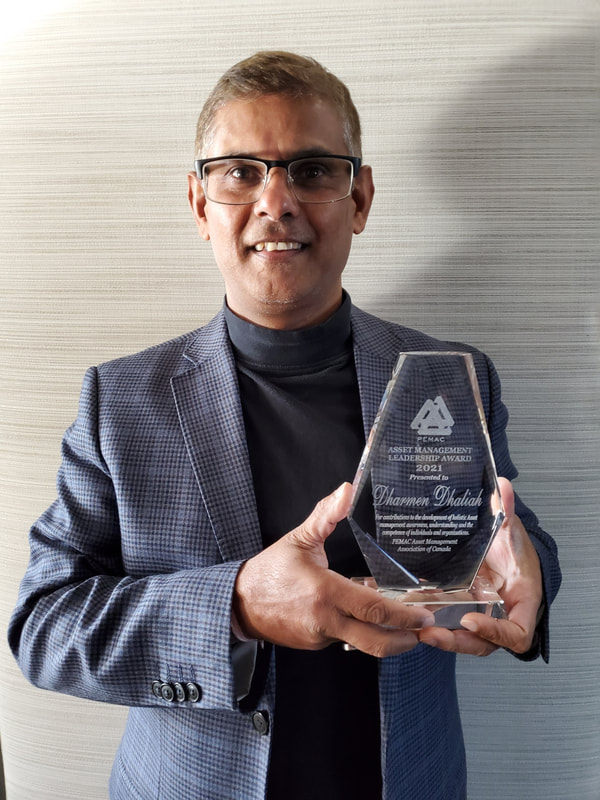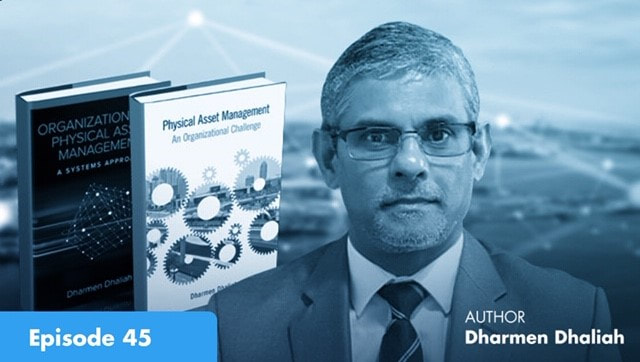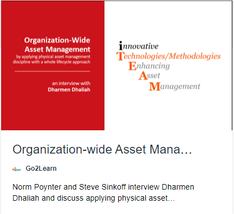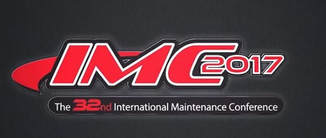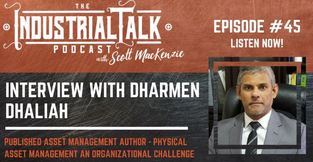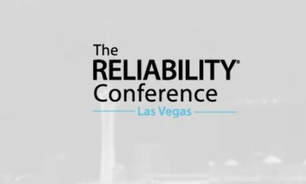Asset Management Leadership Award
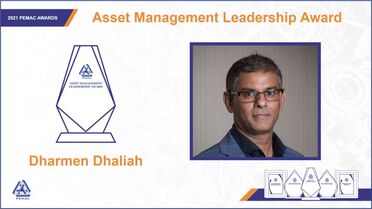
PEMAC congratulates Dharmen Dhaliah, who has been awarded the 2021 PEMAC Asset Management Leadership Award.
This award recognizes great contributions to the field of holistic asset management and celebrates an individual who inspires the advancement of improved Asset Management in Canada. PEMAC celebrates Dharmen and the contributions he continues to make, enabling other professionals to progress towards greater Asset Management achievements in their organizations and careers. Asset Management Leadership Award starts at the 20 Minutes mark in the video. |
Asset Champion Podcast
|
Mike Petrusky asks Dharmen about his two books and his vision for the physical asset management industry and the need for proven leadership, coaching and mentoring skills to implement and manage change through organizational transformation.
|
Organization-Wide Asset Management
Ask anyone in the organization individually you will hear that they have been managing physical assets well for a long time. However bring all those individuals together in one room and ask the same question again, you will most probably get a completely different answer. Traditional physical asset management systems and other asset-related initiatives tend to be silo-based, developed by a section or function for use only in that function. The effects of the isolated function-specific approach are widespread and have significant implications, creating gaps and overlaps in business processes and most importantly impeding the decision-making processes. Organizations are investing lots of money and resources, but for far too long the focus has remained on education, tools and methodologies. It is time for organizations to step up and undergo a paradigm shift focused towards an integrated asset management approach that will create a system of organization-wide physical asset management and moving away from the silo approach. This transformational process will improve coordination and collaboration while aligning functional areas to reach common goals.
Are We Actually Realizing Value from Our Asset Management Program?
IMC-2017 FLORIDA, Learning Session - 42:44
Realizing value is the main focus of asset intensive organizations. Organizations design, build, own, operate and maintain physical assets to derive tangible or intangible, financial or non-financial value from them over their entire life cycle. Eventually it is befitting to spend some time understanding what value is and how it can be realized. As a matter of fact ISO 55000 makes reference to 'value' and 'realize value' in its definitions of asset and asset management respectively. Realization of value requires the achievement of a balance of costs, risks and benefits, often over different timescales. So what does value derived from physical assets means to your organizations? Is it value to customers, value to stakeholders, or value physical assets contribute to achieve organizational objectives? How are these values quantified, measured and tracked to support the overall system? Do you have a process in place to actually identify and visualize the activities contributing to the realization of value from your physical assets? This session will describe the asset management value chain in organizations and explore the existing roadblocks and constraints that are stopping organizations to realize maximum value from their asset management program.
Realizing value is the main focus of asset intensive organizations. Organizations design, build, own, operate and maintain physical assets to derive tangible or intangible, financial or non-financial value from them over their entire life cycle. Eventually it is befitting to spend some time understanding what value is and how it can be realized. As a matter of fact ISO 55000 makes reference to 'value' and 'realize value' in its definitions of asset and asset management respectively. Realization of value requires the achievement of a balance of costs, risks and benefits, often over different timescales. So what does value derived from physical assets means to your organizations? Is it value to customers, value to stakeholders, or value physical assets contribute to achieve organizational objectives? How are these values quantified, measured and tracked to support the overall system? Do you have a process in place to actually identify and visualize the activities contributing to the realization of value from your physical assets? This session will describe the asset management value chain in organizations and explore the existing roadblocks and constraints that are stopping organizations to realize maximum value from their asset management program.
The Industrial Talk Podcast
Sustainable Organizational Asset Centric Reliability Culture. That is a mouthful but needed for REAL, Long-term operational, financial and company value. This weeks interview is with Mr. Dharmen Dhaliah author of “Physical Asset Management – An Organizational Challenge”. Our conversation addresses how an organization can achieve an Asset Centric Reliability Culture. Find out more about Dharmen at:
Implementing a Successful CBM Program
The RELIABILITY Conference Asset Condition Monitoring Forum - 41:34
It is a fact that the way we do maintenance has significantly evolved over the years with a shift to on-condition maintenance. A Condition Based Maintenance (CBM) program has become an integral part and a key strategy in any maintenance/reliability improvement effort.
It is a fact that the way we do maintenance has significantly evolved over the years with a shift to on-condition maintenance. A Condition Based Maintenance (CBM) program has become an integral part and a key strategy in any maintenance/reliability improvement effort.

